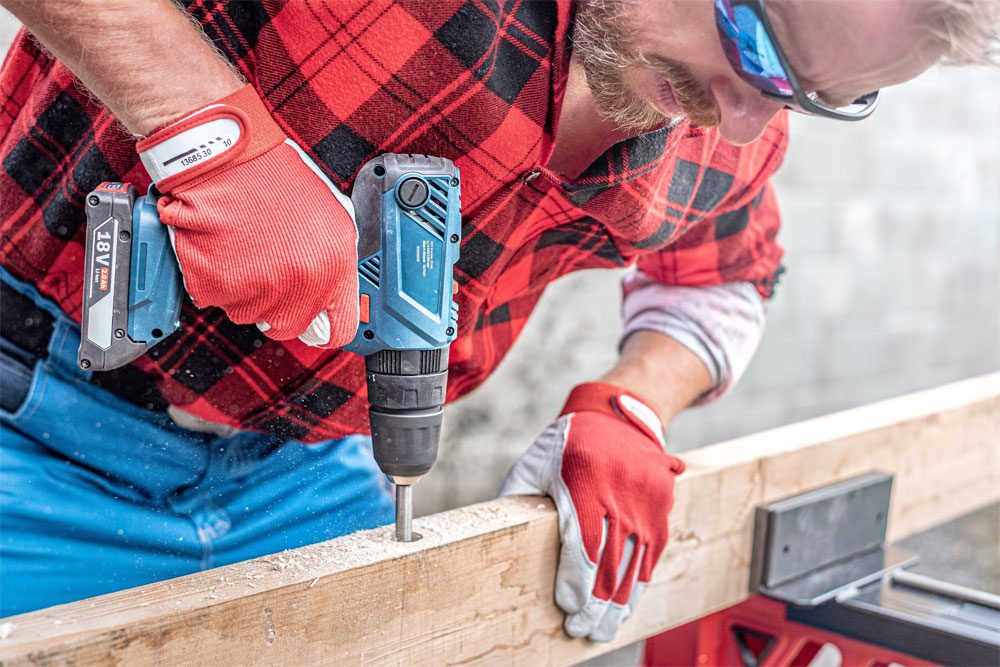
9 Lithium-Ion Battery Safety Precautions to Apply in the Workplace
Over the past decade, the power tools, landscaping and gardening equipment, and even heavy machinery, like forklifts and excavators, used by artisans and contractors have been rapidly transitioning to lithium-ion (Li-ion) batteries as an energy source.
This battery technology evolution offers numerous benefits. For example, tools and equipment powered by Li-ion batteries perform significantly more work per charge, extending their capabilities and providing more portability. In addition, machines that utilize Li-ion batteries offer significantly reduced exhaust gas emissions and noise levels.
However, like the Li-ion batteries widely used in many household devices, Li-ion batteries used in workplace equipment can pose a fire risk. If they are not used, charged, and stored properly, there can be catastrophic consequences.
To help mitigate these risks, and help you better protect your property and people, the Gilbert team has gathered best practices from global private safety companies, leading organizations for power tool safety, OSHA, and other experts. We encourage you to share these nine important tips with your entire team.
1. Make sure batteries, their chargers, and the equipment they power meet the highest testing and certification standards. All lithium-ion batteries, chargers, and associated equipment should be tested and certified by a Nationally Recognized Testing Laboratory or should meet another appropriate standard, such as UL 2054, the Standard for Household and Commercial Batteries.
2. Always read manufacturers’ instruction manuals before using batteries, chargers, tools, and equipment. This information typically includes guidelines for proper battery storage, use, charging, and maintenance that, if adhered to, can significantly reduce the likelihood of a battery becoming a fire hazard.
3. Only use batteries and chargers designed and approved for use in a specific tool or machine. Buying Li-ion batteries and chargers from the original equipment manufacturer or a manufacturer’s authorized reseller ensures they will function properly with the uniquely manufactured systems in your equipment.
4. Keep Li-ion-powered equipment and batteries away from anything flammable when charging. Should batteries or equipment ignite, separating them from other equipment, inventory, vehicles, and anything that is combustible may help reduce the speed at which a fire could spread throughout your facility.
5. Be cautious of overcharging Li-ion-powered equipment and batteries. When tools or batteries are fully charged, they should be removed from the charging device—the charging station is definitely not meant to be a storage spot. It’s also strongly recommended that you unplug chargers when they’re not being used.
6. Regularly inspect batteries and equipment for damage. Stay alert for signs of bulging, crushing, punctures, cracking, hissing, smoking, liquid leakage, melted plastic, elevated temperatures, or any other similar evidence of a problem. Additional indications that a battery or piece of equipment may be damaged include if they fail to fully charge or hold a charge, have longer-than-usual charging times or a noticeable drop in performance, or demonstrate unusual LED activity when placed on a charger. If you identify any of these issues, discontinue use immediately.
7. Store batteries and equipment in fire-resistant containers and cool, dry locations. Do you remember back in tip No. 2 when we mentioned reading manufacturers’ instructions? These same manuals typically contain information on the temperature range for using and storing batteries and equipment. In general, though, experts warn against leaving batteries where they may be exposed to rising temperatures, like near a sunny window or inside a vehicle. If there isn’t an optimal spot in your workplace to safely store lithium-ion batteries and equipment, you may want to consider investing in a safety cabinet specifically designed for that purpose.
8. Don’t do anything that can damage a battery and make it a greater fire risk. If at all possible, you and your employees should avoid doing the following to a Li-ion battery:
- Dropping it.
- Using it as a hammer or hammering it.
- Modifying, disassembling, or tampering with it.
- Storing or transporting it in a container with loose metal objects or anything else that could short-circuit it.
- Burning or incinerating it.
- Immersing it in liquid or allowing any fluids to get inside it.
- Leaving it near corrosive gases.
- Attempting to jump-start it with another power source if it is not charging.
9. Follow local, state, and federal regulations for properly disposing of batteries that are damaged or past their useful life. The most important thing to know about Li-ion battery disposal is that these batteries should not be thrown in regular garbage or recycling bins. Instead, they should be taken to a specialized recycling facility or household hazardous waste collection point. To help prevent an incident before they are safely disposed of or while in transit, experts suggest placing defunct batteries in separate, sealable plastic bags; taping their battery terminals; and putting them in a fire-resistant container with sand or another extinguishing agent.
Implementing these lithium-ion battery safety precautions in your workplace is an excellent start to managing the risks associated with lithium-ion batteries. However, it is equally important to have a plan in place that provides direction to your people on how to respond if a fire, explosion, or other battery-related failure occurs. Make sure to include lithium-ion-related incident response procedures in your workplace emergency action plans and employee training.
As Li-ion battery use becomes more prevalent across construction, landscaping, and many other industries, workplace incidents involving these batteries are likely to rise. This makes it a great time to do a quick check-in with your local Gilbert Insurance professional so we can review your existing commercial property and other business insurance policies. We want to help you evaluate your current coverage and whether you have appropriate financial protection for your equipment, building, inventory, and more in light of the new workplace hazards and challenges that Li-ion batteries present.
